Yet, the literature also documents how lengthy running time of films creates challenges when using movies to teach. Instructors must show films across different class sessions or course sections (Burton 1988), use them only during special ‘mini-terms’ with extended class periods (Maynard 1971), have movies viewed by students in conjunction with specially arranged showings (Tan and Ko 2004; Tipton and Tiemann 1993), or assign movies to students as homework (Livingston 2004). Time constraints are compounded given the need for after-discussions that highlight the sociological significance of media and ensure teaching with popular culture is more than just entertainment for students, but an entertaining way for students to learn.
A possible alternative to films are television shows which typically have more facilitating length for most class meetings (usually 22 or 44 minutes) and require the same basic classroom technology as films: a DVD player and a television, or a computer and projector as many PCs now play DVDs and Blu-rays, and an increasing number of shows are readily available through internet streams. Thus, in considering convenience alone, it is surprising that with the exception of The Sociological Cinema, the sociological discipline has been somewhat slow to develop and publish ways to incorporate television media into the classroom.
However, the teaching literature does describe one exception to the absence of television in sociology classrooms as The Simpsons, an animated show that is now America’s longest running primetime series is an especially popular teaching aid. For almost a generation now, The Simpsons taught the world how a TV show that would seemingly be far removed from reality because it is animated as opposed to acted out by real people in real actual places, is actually an especially insightful, artistic platform to show audiences the often illusive, and problematic aspects of the tangible world they live in. For example, Tim Delaney’s (2009) book Simpsonology illustrates how “the series reveals a great deal about us because so many of the episodes are entwined with the all the social institutions found in society” (31). Todd (2009) explains how the show is useful for environmental sociologists by raising awareness of serious issues through nonthreatening, entertaining imagery like radioactive, three-eyed fish. Scanlan and Feinberg (2000, 2007, 2010) argue the critical social commentary of The Simpsons can be harnessed to help sociology students actively learn. The Teaching Resources and Innovations Library (TRAILS) includes a teaching gender activity (Hare 2010) and work-family assignment based on The Simpsons (Hare and Lennartz 2010). Darren Blakeborough of the University of the Fraser Valley (Ryan 2008) and Berkeley’s Professor Thomas Gold (2008) even went beyond using only isolated examples from the show and offer sociology courses organized entirely around The Simpsons.
Academics from other disciplines also use insights from The Simpsons in ways that can be incorporated into sociology classrooms. Irwin, Conrad and Skoble’s (2001) The Simpsons and Philosophy points out how the satire and double meaning in the show affords general audiences the means for philosophical reflection, and the text contains sociological-oriented chapters on Karl Marx, sexual politics and the family. Brown and Logan’s (2005) Psychology of the Simpsons explains how the show helps us look at ourselves in the mirror without “rose colored glasses,” and explores the concepts of identity, alcoholism, sex and gender. Written from a humanities perspective, John Alberti (2004) describes how the essays collected in his edited volume Leaving Springfield: The Simpsons and the Possibility of Opposition Culture illustrate how the show uses “the traditional sitcom format to ridicule powerful cultural, social and political institutions" (xiv). Looking at both the show as a cultural representation and a social force, Keslowitz’s (2006) The World According to the Simpsons explains how Americans love the show because we see our own selves in the characters, and it touches many themes of modern life including media, politics, and globalization. Waltonen and Du Vernay (2010), who I remember hearing them play episodes of The Simpsons from the adjacent classroom while a graduate instructor at The Florida State University, incorporates sections on critical thinking, writing, and culture (along with a thorough review of Simpsons' research) in their text The Simpsons in the Classroom. Pinsky’s (2007) The Gospel According to the Simpsons demonstrates how the show offers audiences access to the complex and sometimes contradictory moral teachings of Christianity, and the second edition includes a lengthy afterword exploring religious representation in other cartoon series that have built their own impressive audiences mimicking The Simpsons. Thus, a show that George H. Bush criticized during the 1992 Republican Convention (Dowd and Rich 1992) for its amorality is now held in high regard by academics across almost every discipline, and audiences all around the world. Cartoon Sociology & South Park: Moving Beyond The Simpsons
The Simpsons was just the first of what evolved into an entire genre of adult-oriented cartoons critically depicting social reality through humor and satire. For example, FOX broadcasting’s Sunday night “Animation Domination” has been incredibly successful by airing other primetime cartoons that mimic The Simpsons, including Family Guy, American Dad!, Bob’s Burgers, The Cleveland Show, and Futurama (the latter of which has moved to Comedy Central for its closing seasons). Whereas many television sitcoms exaggerate reality in a way that over-emphasizes the comfort and stability of a middle-class existence, animated series highlight the contradictory, controversial and illusive aspects of social life with satirical portrayals of our society and culture that are both comical and therefore accessible, but also astutely insightful and therefore an excellent tool for sociology classrooms. I (2011) published an exercise using another Fox show, King of the Hill, to teach the concepts of status and role in TRAILS and, like other instructors who have successfully taught entire courses on The Simpsons, I used multiple cartoon series as the basis of an entire sociology course I called ‘Cartoon Sociology.’
Most of this course I taught revolved around the cartoon South Park which follows the tradition of The Simpsons by conveying critiques of social reality through irony and satire.
The vulgarity makes it challenging for sociology instructors to use South Park in the classroom because the critical insight is regularly packaged alongside “toilet humor” (I hesitate to use quotation marks there since lavatories, both actual and accidental, are a regular theme on the show). Yet, critics point out how the carnival aspects of the show communicate complex critiques of social, cultural, and political reality; or in other words, the philistine, sophomoric antics might be why, or how South Park so effectively communicates its acute insight. For instance, media critics from both Time Magazine (Poniewozik 2009) and the New York Times (Heffernan 2004) applaud South Park for using morally offensive materials to point out hypocrisy in our supposedly moral social world, or the chasm between the ideals we celebrate as a culture and the actual social practices we engage in. Sixty-Minutes (Kroft 2011) called the show “scatological as well as philosophical, and every bit as profane as it is profound.” And, like The Simpsons, the series inspires edited academic volumes. South Park and Philosophy (Arp 2007) argues the show “bothers” many viewers because it courageously explores ideas people are uncomfortable confronting. Organized around the thesis that South Park uses the profane to question the sacred, Taking South Park Seriously (Weinstock 2008) offers readers access to abstract academic ideas using examples from the show. The creators of South Park maximize the critical insight found in other animated series because they are always willing to push every boundary in exploring almost everything and anything social scientists study no matter how controversial, uncomfortable, or even taboo those subjects may be. This means the ever growing catalogue of South Park episodes are a largely untapped resource for outgoing sociology instructors to use (with care) in the classroom.
Still, the majority of my students argue the show is more than just “toilet humor.” Students applaud South Park’s comedic critique of social reality in arguing the show “uses humor to bring general awareness and knowledge to the public viewers,” or that the show “portrays the problems in our everyday society in a way where you can laugh at it, but still be left thinking of the meaning or the point that they were trying to get across.” Other students suggest South Park confronts issues we as a society should discuss but do not; writing South Park “brings up all the issues that no one else dares to bring up and explains them rather thoroughly,” while another says the show “discusses those “hard questions” or topics that we generally avoid.” However, the most common celebratory comments applaud South Park’s ability to provide a relevant critique of social and cultural reality. One student says the show “points out vices, follies, abuses, and shortcomings of society,” another argues South Park shows us the truth and how our culture actually is under the “hidden” mask we each wear,” while one last student claims, “I think it shows us the political and social problems in the world in a way that makes it obvious what the social problems are.”
In fact, cumulative student comments across my ten years of teaching with a variety of animated series suggest students find cartoons an enjoyable way to learn. When asked what they like about my courses on formal evaluations, many students reference my use of cartoons. For example, one writes of my “ability to relate everyday things to the class, i.e. Futurama, Simpsons, South Park.” Another student comments how cartoons “made it possible for everyone to understand the material despite his/her learning style.” One student wrote how I “presented the material in a fun way. We got to watch cartoons. It was awesome.” Another comments “the cartoons relate to what we’re doing in class” and “I like how he shows what we learn through cartoons, it makes class fun.” Only one student, a nontraditional adult learner who had returned to school after retiring, has ever voiced their concerns about the inappropriateness of animated programming in my courses. Perhaps this sole concern emerged because younger students are increasingly desensitized by the spectacle of much modern media; which means maybe students even more so than older instructors are able to easily disregard, or unknowingly engage the grotesque carnival of the show to better appreciate the social and cultural critiques South Park offers.
Another benefit of South Park over network television shows is the speed at which the creators are able to produce episodes. Whereas the typical episode of The Simpsons takes six months to produce, according to a ‘behind the scenes documentary’ South Park’s small staff makes use of the latest animation technology to regularly produce episodes in six days (Bradford 2011). This means whereas most cartoons seldom confront current events, South Park often provides commentary on happenings as they unfold.
Thus my experiences show South Park is one of, if not the, most effective and accessible animated series that can be used to teach sociology. South Park (and of course or other cartoons) capture students’ attention while still ensuring critical thinking and sociological insight is conveyed through examples that are insightful, yet never misconstrued for actual reality given they come from an animated series. This both ensures students develop a more critical lens through which to examine and assess their own life and the media they consume, while also showing through examples that if one views life through a critical lens, sociological insight can come from almost anywhere. South Park already has a notable presence on The Sociological Cinema, which has links to short clips exploring gender socialization, consumerism, homophobia, and social class. To further illustrate the usefulness of South Park as a sociological teaching tool, The Sociological Cinema posted four of my instructional strategies in the resources section that use complete episodes. One describes how the "Chickenpox" episode from Season 2 of South Park can be used to illustrate the three sociological paradigms’ explanations for inequality. In another, I outline how I teach introductory students about agents of socialization using the "Hooked on Monkey Fonics" episode from Season 3. Additionally, for very outgoing instructors the "Fishsticks" episode from Season 15 exemplifies both Cooley and Mead’s theories of self. Lastly, I illustrate the concept of reification that is central to critical theory, which can be taught using an episode from Season 13 called "Margaritaville." Each episode-based exercise includes a printable worksheet, as in my experience, a formal approach to teaching with cartoons is one way to help ensure students seriously undertake the effort.
Jason Eastman
Jason Eastman is Editor-in-Chief at SociologySounds and an Associate Professor at Coastal Carolina University. He researches how inequality is perpetuated through culture, often by focusing on the construction of identities through rock and country music, including specific bands like The Rolling Stones and an entire subgenre of country devoted to truck drivers.
References
Erin Norra
2/7/2014 03:12:31 am
I'm so glad I'm found this site! I'm currently a soc undergrad and I find that cinema falls into a "hole" of sociology. Our youth thrive off of pop culture and we lose them more and more everyday to technology. So why not teach them and reach them in their own medium? This is so awesome!
Jason Shook
6/27/2022 12:30:11 am
Oddly enough I found this page. How I found it should be compelling enough if not strange lol. But the subject is fantastic. Is anyone still around??
Jason Shook
6/27/2022 12:27:12 am
I just found this site/page but there’s nothing else like it. Is anyone still looking into this?? Comments are closed.
|
.
.
Tags
All
|


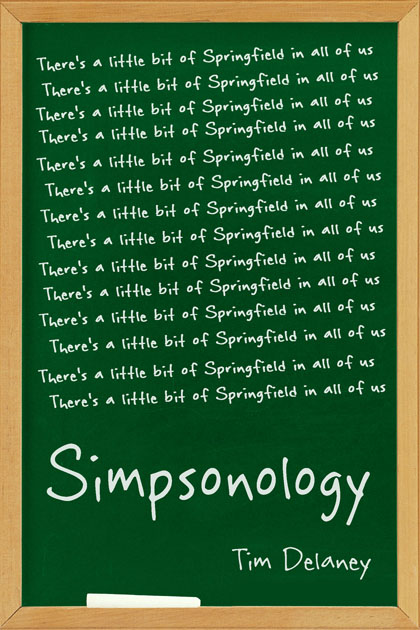
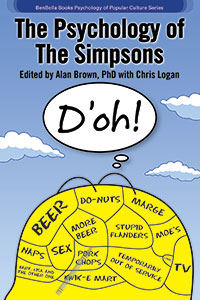
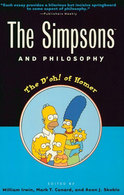
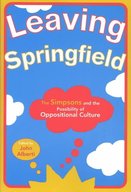

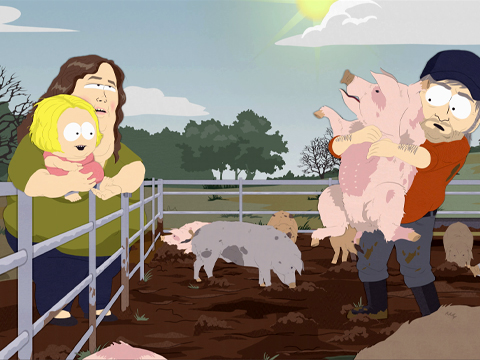
 RSS Feed
RSS Feed